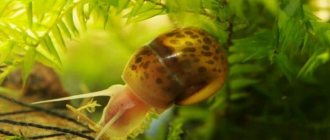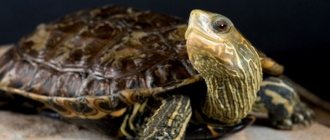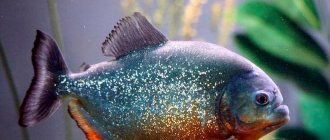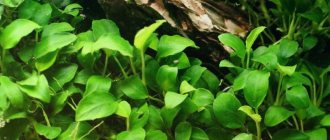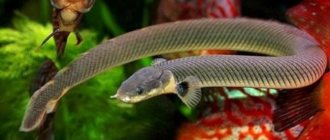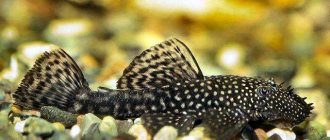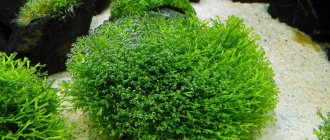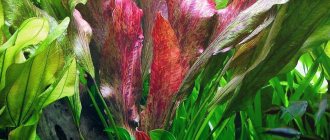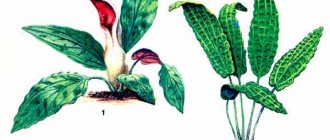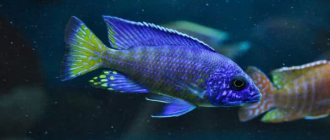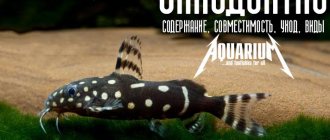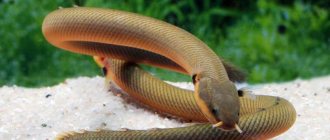Why has Anubias nana become such a popular aquarium plant? Does it have any disadvantages? How to care for it? In the article the reader will find answers to these and other questions related to hydrophytes.
Anubias nana is so popular that it is equally likely to be found in the home biotopes of beginners and experienced aquarists alike.
Nana is a favorite of those aquarium owners who prefer an abundance of living aquatic flora. Such sympathy is easily explained: this short but extremely hardy plant embodies in miniature the essence of a natural biotope.
Appearance
Anubias nana is a miniature plant native to Africa, the maximum height of adult specimens is no more than 15 cm. It belongs to the araceae family. The culture has a bushy, spreading structure. Anubias nana is characterized by beautiful, oval, large leaf blades with a bright, dark green color.
The bark system of Anubias is quite well developed, branched, but does not go deep into the thickness of the soil. Thanks to its emerald foliage, dotted with thick, pronounced veins, the plant looks quite impressive, and therefore is widely used to create aquarium design.
The plant develops evenly throughout the year. It can grow in both aquatic and air environments. The growth of Anubias nana slows down only when the temperature drops too much. The plant beautifully covers the bottom of the aquarium, glitters, and creates the effect of dense tropical thickets. Anubias reproduce vegetatively.
Description
Anubias belongs to the Araceae family. In nature, these plants live mainly in the humid and hot tropical regions of South America. The genus Anubias includes mainly aquatic plants growing in rivers, lakes, ponds and streams. They can lead a completely submerged lifestyle, and also easily adapt to seasonal fluctuations in water, when reservoirs become shallow and they remain partially or completely open. This makes representatives of the genus Anubias very hardy plants that easily adapt not only to the aquarium, but also to the paludarium, florarium or terrarium.
The Anubias Nana group is united by its rather small size. On average, representatives of dwarf Anubias do not exceed 10-12 cm in height. Like the taller representatives of the genus, they have a powerful creeping rhizome and hard leaves. The leaf blades are oval or ovoid, shiny, deep green. The leaves are located on long thin petioles and grow from a shortened stem.
The main root of Anubias is powerful, creeping, it spreads over the surface of the soil and produces many daughter leaf rosettes that form a dense carpet of leaves. The adventitious roots are very tenacious. They are able to attach themselves to stones and snags, which is why Anubias are often used to create a wide variety of green compositions.
Anubias Nana grows slowly, which makes caring for this aquarium plant much easier. It does not require frequent cutting or replanting and is excellent not only for general aquariums with fish, but also for decorating “lazy” herbalists, as well as aquascapes.
In an aquarium where Anubias is constantly fully submerged, it is rare to see it bloom. But in humid greenhouses, paludariums and terrariums it can delight with beautiful white “flags” of inflorescences. The flowering of Anubias resembles the flowering of Spathiphyllum. Its inflorescence also consists of a small yellowish or cream-colored spadix and a white bract. In nature, Anubias are pollinated by small insects, so in order to get viable seeds, you will have to arm yourself with a soft brush and independently transfer the pollen from the lower flowers to the upper ones.
Living in the natural environment
The natural habitat for Nana Anubias is tropical African areas. This culture grows in freshwater bodies of water with little current. Anubias grow along river banks, on snags and branches, underwater rocks, lakes, swamps, and small rivers.
This aquarium plant is rightly considered one of the most stable and hardy, due to its ability to live even without water. Anubias nana feels great under any parameters of hardness and acidity of the aquatic environment, and is unpretentious in terms of temperature conditions and degree of lighting.
Plants can exist in shade for a long time, but this is reflected in the brightness of the leaf blades, growth and reproduction of the crop.
Among the main advantages of an aquarium plant are the following:
- lack of response to changes in water quality;
- small size of shrubs;
- no need for regular pruning and trimming;
- resistance to lighting deficiency;
- excellent decorative qualities;
- slow pace of development.
Anubias leaves retain their rich emerald color even in hard or excessively acidic water environments. This plant is a real find for beginners and aquarists who do not have the desire or ability to spend a lot of time caring for underwater crops.
Rules of care
Although this species grows very slowly, it will still need some light care (every 2-3 months). Most of its care will consist of timely pruning of leaves and pruning of roots.
Roots are pruned solely for decorative purposes (not counting those cases when their rotten parts are removed). Unlike other plants, the main purpose of the roots of Anubias Nana is to anchor the plant to the substrate.
Leaves can also be trimmed. Once the leaves have reached a large size, cutting them back will not produce a new leaf from the remaining stump, but it will encourage new leaves to grow at the tip of the rhizome.
As long as the rhizome remains healthy, free from rot and algae, the plant will continue to thrive
Sometimes a lack of nutrients can cause the plant's leaves to turn yellow. This is fairly easily treated by cutting off the dead/dying leaves from the plant, checking the nutrient levels in the water and adding the missing ingredients. Yellow discoloration is usually due to iron deficiency.
As a rule, no additional supplements (nutrients or CO2) are required for the normal development of this plant. However, adding any of these components will help speed up its growth.
Decorative properties
Anubias nana is valued by aquarists for its spectacular appearance. The plant is excellent for decorating aquariums, the surface and bottom of a reservoir. Slow growth, grace and miniature size allow the plant to be used to create designs in containers of any size.
It can be planted both in the background and foreground, as well as in the central part of the aquarium. Alternating the plant with other aquarium crops, taller and larger, creates the illusion of an underwater tropical forest, which looks simply enchanting.
How to plant correctly
The ideal soil for Anubias nana is nutritious, silty soil. You can use purified river sand for these purposes, as well as peat and clay impurities and pebbles.
In order for the plant to take root well and develop fully, its rhizome should not be immersed in the soil too deeply. It is also forbidden to dig deep into the roots of Anubias, as this can lead to the death of the plant. It will be very good if you manage to place the culture on pitfalls and snags.
Bloom
Anubias nana periodically throws out flowers. If flowering occurs at great depths, they usually do not reach the surface.
Outwardly, it resembles a spathiphyllum inflorescence, only much smaller in size.
The covering leaf is initially green, lightening over time to almost white.
The flower can live for several weeks. When it becomes unattractive, it is better to remove it without waiting for the natural completion of the cycle.
Anubias and its inflorescence.
Features of reproduction
Anubias nana reproduce independently, vegetatively. The shoots appear on the rhizome of the plant. Once the daughter specimen has formed its own root system, it can already be separated and replanted.
For full reproduction of this aquarium culture, it requires sufficiently soft water, a tropical climate, and a temperature regime not lower than +20°C.
In this case, the reproduction process occurs naturally, without human intervention.
In more rare cases, Anubias also reproduce by seed. As a rule, this is observed in the natural habitat. The seeds of an aquatic plant, falling into the ground, under favorable conditions, begin to germinate and develop.
Main lighting requirements
Anubias nana does not belong to the category of light-loving aquarium crops. In the summer, natural sunlight will be sufficient for the plant to fully develop. In winter and autumn, weak fluorescent light bulbs can be used for these purposes.
With excessively intense additional lighting, Anubias can be affected by parasitic algae. In addition, when using artificial lighting, it is important to ensure that its sources are not located too close and do not leave burns on delicate, sensitive leaves.
Therefore, in bright light, it is recommended to place the plant in shaded areas of the aquarium. The recommended length of daylight for Anubias is approximately 10 hours throughout the day.
Conditions of detention
Anubias nana is extremely unpretentious in terms of care, but in order for the plant to feel as comfortable as possible and please the eye with its thick emerald green foliage, it should still be provided with the following conditions:
- Soil - since aquarium culture receives most of its nutrients from the soil through the root system, organic feeding and fertilizers are highly desirable. The waste products of fish and other aquarium inhabitants will also be an excellent food for Anubias.
- Reservoir parameters . This plant is suitable for aquariums of any size. The larger the container, the more Anubias bushes can be planted in it. It is desirable that the walls in the aquarium are not too thick and high and allow sunlight to pass through well.
- Filtration . Anubias nana is very picky about the cleanliness of the aquatic environment. Therefore, the plant needs regular filtration and water replacement. If this rule is not followed, a pathogenic coating forms on the leaf blades and stem, which has a detrimental effect on the crop.
- Temperature regime . Despite the fact that Anubias nana is resistant to temperature changes, it feels best if the water temperature in the aquarium is around +24-25°C.
- Hardness and acidity parameters . Anubias love soft water. At values not much higher than 1°, the plant will actively grow, develop and delight with its beauty. As for acidity, its optimal level is no more than 7 units.
At the same time, if you do not comply with the desired standards of lighting, water hardness and acidity, and temperature conditions, Anubias nana will not die. In extreme cases, its leaves will simply turn pale, growth and reproduction processes will slow down. The only thing this plant really needs is clean water, proper filtration and aeration. Additional oxygen supply is also welcome.
Role in aquarium design
This species is placed in the foreground of the aquarium to create a green lawn of dense and dense bushes. Can decorate both the bottom of the aquarium and the surface of the reservoir. Thanks to its slow growth, it is able to preserve the created landscape and interior for a long time. If Anubias nana is alternated with tall plants (for example, Anubias bartera), you can create the impression of a forest or valley. This type is perfect for people with good imagination and design skills.
Contents in an aquarium
Soil . It is recommended to use silted substrate with large particles (up to 4 mm), since the root system is not buried in the soil, but is located on the surface. This root system is called creeping. Rocky soil, pebbles or coarse sand are ideal for filling.
Nutritious soil . Sensitive to additional micronutrients, as it receives most of the nutrients through the root system. You can do without nutrient soil only if you keep fish in the aquarium at the same time. Their waste products and food residues that settle to the bottom can serve as excellent feeding for Anubias nana.
Water parameters . It is recommended to place Anubias in tropical aquariums with a water temperature of 24-25 degrees Celsius. There is no specific parameter for water hardness: the softer the water, the better for the plant. The acidity of the water should be optimal for the entire aquarium and not exceed 7 pH. It is necessary to maintain cleanliness in the aquarium, replacing a fifth of the water from the entire volume of the aquarium every week.
Aquarium dimensions . The size of the tank is selected depending on the number of bushes that need to be placed. It is recommended to select a tank with low walls (from 35 to 45 cm) so that enough light penetrates the bottom of the aquarium through the water column. This condition is necessary if the aquarist wants to grow a thick and colorful plant or supplement green spaces with the Anubias barter species.
Lighting . Not picky about lighting. Diffused sunlight or artificial lighting with a fluorescent lamp with a power of up to 0.5 W/l is sufficient. It is worth noting that too bright lighting can damage the leaves and the plant can become covered with harmful parasitic algae, which can destroy even the hardiest species. If the plant floats on the surface of the water, you should be very careful when choosing an artificial lighting lamp, as there is a risk of getting burned on the foliage. The duration of illumination of the aquarium should be at least 10 hours. If there is too much light, it is recommended to place the bushes in the shade of another large plant, for example, elodea.
Aeration and filtration . Filtration is a prerequisite for active growth and healthy existence of this species in the aquarium. Turbid water with waste particles will not allow light rays to reach the foliage and the plant will not grow as actively. Dirty water contributes to the formation of pathogenic plaque on the stems, which can destroy even the most persistent species.
Landing . The roots are not buried in the soil, but are located on top of a rocky, slightly silted substrate. It is enough to place the plant bush on the bottom and dig the ends of the roots into the soil to secure the bush in one place. The main thing is not to bury the entire rhizome, as this may cause the plant to die.
Height . This species rarely grows more than 15 cm. For active growth of a young plant, it is necessary to maintain a temperature balance, maintaining a tropical climate in the aquarium. It is worth recalling that the plant loves very soft water from 1 degree. If you adhere to these conditions, Anubias will grow in width and height.
Reproduction . Reproduction occurs vegetatively through division of the creeping rhizome. It is worth recalling that the plant must be ready for propagation: small buds should sprout on individual roots, which over time will form a bushy shoot. When the mature shoot acquires its own root system, the daughter plant can be separated from the mother plant. In some cases, this process occurs independently without human intervention. In its natural habitat, Anubias can reproduce through seeds after flowering. The seeds fall into the ground and germinate over time, forming a new young plant. Anubias bartera reproduces in a similar way.
Fertilizers . This species does not need additional fertilizer if it shares an aquarium with fish, since waste and fish food serve as an excellent nutrient substrate for Anubias nana. If there are no fish in the aquarium, it is recommended to purchase specialized fertilizers: silted substrate with potassium, phosphorus, boron, calcium and other microelements. For example fertilizer or “Tetra PlantaPro Macro”.
What problems may arise
Although Anubias nana is considered one of the easiest aquarium plants to grow, when breeding it, aquarists may encounter problems such as slow growth. This may be due to the natural dormant period that occurs during the winter months, as well as the lack of proper conditions.
To solve the problem, you should try to feed the anubias with mineral organic fertilizers, monitor the hardness and acidity of the water, and adjust the degree of lighting. Anubias nana has a number of certain disadvantages that cause some difficulties when settling in an aquarium. These include:
- problems with development in insufficiently soft water environments;
- need for nutritious soil;
- impossibility of flowering in aquarium conditions;
- need for a tropical climate for health and beautiful appearance.
Otherwise, this culture rarely causes serious problems. Anubias do not lose their beauty even after transplantation and long-term transportation. In case of mechanical or burn damage, the plant recovers quite quickly.
Compatibility with other aquatic cultures and inhabitants
Due to its versatility, resistance to light deficiency and small growth, Anubias nana gets along well with most other varieties of aquarium crops. It is recommended to plant the plant next to larger, light-loving specimens.
The hard leaf plates of Anubias nana protect it from attacks by snails, mollusks and ornamental fish. This plant is considered ideal for breeding cichlids, as they can live and reproduce peacefully on its bushy leaves.
It is not recommended to plant Anubias in an aquarium where bottom-dwelling fish live, loosening the soil and raising small particles of soil in the water.
Otherwise, the water in the container must be carefully filtered and changed regularly to avoid mechanical damage to the leaves of the plant.
Diseases and pests
The skin on the surface of the leaves protects Anubias not only from being eaten by fish, but also from pests. Only small algae can settle on them .
From muddy water, the pores become clogged with debris, and the entire leaf blade slowly dies.
Direct sunlight causes brown spots on the plant. At water temperatures below 23 °C, Anubias stops its development and may not resume.
The beautiful and unpretentious Anubias Nana will become a real decoration of any aquarium and will not cause much trouble to the owner.
Stress resistance of Anubias nana
Anubias nana is the most stress-resistant aquarium plant. This is one of the few specimens that can exist even with minimal amounts of water. And factors such as changes in temperature or water parameters, lack of lighting and other unfavorable external conditions will certainly not cause serious harm to the plant.
Anubias nana is a beautiful, miniature, extremely unpretentious aquarium plant, which is famous for its decorative properties. The most important condition for its cultivation is clean, filtered water, proper planting and nutritious soil.
Anubias tolerate fluctuations in temperature conditions and light deficiency well, and are not susceptible to most diseases characteristic of aquatic plants. But in order for this amazing plant to feel great and delight you with its spectacular beauty for a long time, you should still take care of it and create optimal conditions in the aquarium.
What explains the plant's hardiness?
In nature, Anubias nana grows in tropical regions of West Africa. There, in a protected area on mountainous slopes, these hydrophytes inhabit relatively flat coastal areas of shallow but fast rivers and streams.
Large fragments of porous volcanic rocks, driftwood and driftwood, which are carried into this area by rapids from higher areas, serve as a kind of anchors for Anubias. Clinging to them with powerful roots, it resists the onslaught of water.
With the onset of the rainy season, rivers change their banks, and plants find themselves under water. And during periods of drought, bushes spend a significant part of their time in the open air.
Extreme growing conditions made nana so amazingly hardy.
Required water conditions
Like cryptocorynes, Anubias prefers to live in clean and soft water; in nature they are not very sensitive to the composition of the water, and also in the aquarium.
They can be planted in running liquid from the tap. This property makes the plant even more accessible to every aquarist. The required water temperature Celsius is 22-26o, but in winter the temperature can be adjusted to 18-22 degrees, which stimulates vegetative dormancy. Do not lower the temperature below 18 degrees, otherwise the seedlings will die from a sharp change in temperature.
